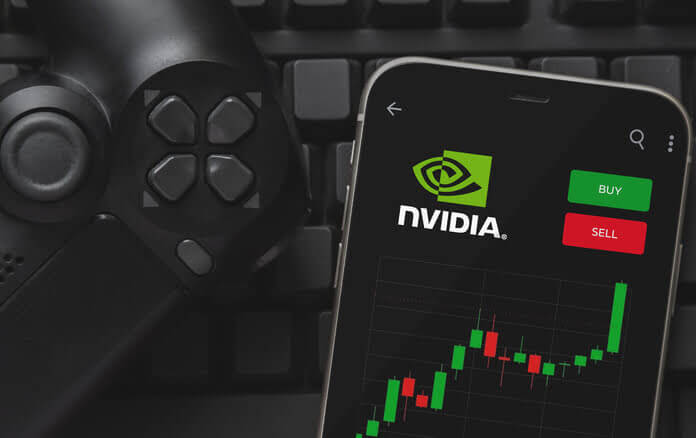In a nice copy of Intel (NASDAQ:INTC), Nvidia (NASDAQ:NVDA) stock has held up reasonably well (contrary to Intel), signalling that the market continues in denial that Nvidia won’t produce the growth to justify the high valuation. Nvidia faces, at best, a decade of no returns.
The principal evidence for this thesis is that despite the sell-off, the valuation remains roughly as expensive as several quarters ago, meaning the downside risk is just as extreme, with no upward triggers in sight.
Skeptics may point to the general macro climate as the source of the stock sell-off in 2022, which I had foreseen from a high level, but Nvidia’s Q2 results announcement last month was the final blow. Nvidia is in decline but still a growth stock.
Nvidia Q2 Results
Revenue of $6.7 billion grew 3% year-over-year but fell 19% quarter-over-quarter, worse than Intel’s 17%. The year-over-year comp was saved by a 61% surge in data center, but this is highly misleading since the sequential trend was a low single-digit increase, indicating growth is also fading.
In May, analysts expected $8.44 billion in revenue. It’s easy for analysts to predict a growth company by assuming it adds a portion of revenue every quarter. In reality, Nvidia’s revenue comes from millions of people buying PCs, corporations expanding or upgrading data centers or cloud usage, and crypto miners. This demand will eventually reach a wall, and analysts have been discussing a recession since the beginning of the year. The analysis is easy in hindsight, but the growth spurt over the last year should have signaled a pull-in in demand.
Gross margin fell to less than 43%, apparently because Nvidia had to write off surplus inventory due to prepayments when the firm expected unobstructed growth.
The gaming segment’s decline caused underperformance.
Nividia Q3 Outlook
I think it’s too simple to blame crypto. While crypto played a role, the sequential decline was much greater than Intel’s Q2, and Nvidia expects another $0.8 billion sequential decline to $5.9 billion.
Unassuming analysts had modeled Nvidia’s expansion into eternity, hitting $9 billion in Q3, meaning NVDA’s guidance was wrong by 33%.
Intel announced a 17% year-over-year and quarter-over-quarter reduction in Q2 to $15.3 billion and a $15-16 billion sequential outlook. Nvidia fares worse than Intel since Q2 could have been Intel’s bottom, while Nvidia is still declining.
As an Nvidia skeptic, it’s easy to run a victory lap, but Nvidia’s Q2 results were similar to Intel’s. The story is different. Intel investors are avoiding the company because they listened to Intel’s statements about poor product execution as a reason for the downturn. In contrast, NVDA bulls believe the broad growth drivers are unaffected and growth will return soon. There’s little sign of rapid growth, let alone hyper-growth, returning. Without growth, the valuation is illogical.
Intel noted recently that it was simply the first firm to submit its Q2 numbers, with other companies – even presumably best-in-class companies like Nvidia – revealing similar difficulties.
The latest news is that the U.S. has placed sales limits for high-end NVDA (and AMD) data centers chips, with NVDA estimating the effect at $0.4 billion for Q3, meaning an additional $1.5 billion in yearly income may have been wiped away.
Nvidia’s Gaming Sales
Nvidia says gaming trends are solid.
Gaming revenue rose 61% in 2022, bucking the relatively flat pattern of the previous four years. If the Q2 burst and Q3 collapse are the start of a reversal to the mean, the stock may continue to fall.
Behind the hood, there are even more reasons for concern.
The long-term leeway for gaming growth seems frighteningly limited when considering the realistic opportunity for long-term “growth” (read: lack of growth) in terms of units and average selling price, especially in light of Intel and AMD’s ever-increasing competition on pricing and performance. Nvidia’s 2021 gaming statistics may be an outlier, not a new growth norm. Nvidia’s gaming business may wind up looking like Intel’s PC business, which means the other companies would have to carry the company even more to achieve strong growth.
Stock Valuation
The elephant in the room is the near future. The typical Nvidia theory is that the stock price anticipated growth that may not materialize for years (if ever). As we’ve seen in the last month, this expected rise is not only not happening; it’s declining.
This indicates that although the stock price has fallen, so have earnings. The P/E multiple is still strong.
If the market rerates NVDA as a no-growth firm, the stock might drop another 50%. Such a fall appears natural given that the value remains high despite revenue and earnings trending in the opposite direction of what the growth firm valuation predicts.
Even TSMC (NYSE:TSM), which is indexed to the whole semiconductor industry, trades at a 3x lower multiple.
Given recent patterns, the Q2 announcements may have been the start of a new era for the stock, as indicated by the (possibly last) bearish reaction to China restriction news. The question isn’t how much NVDA will beat and raise, but how low it will go, how long it will persist, and when Nvidia will recover.
Bottom Line
Even after the recent fall, the market undervalues NVDA’s unpredictability. The latest China sales ban is a warning sign. I don’t see how Nvidia’s sequential revenue patterns make it an attractive investment. While the price and earnings have fallen, the P/E (and P/S) value is still among the highest in the market.
Nvidia faces its toughest competition with Intel’s GPU entry and AMD’s resurgence. Given its best-in-class gross margins, NVDA faces market share and pricing pressure. Nvidia’s position is unsustainable. Remember that Nvidia’s overcharges directly affect earnings. While Nvidia expects a comeback from Q2’s awful gross margin and Q3’s low, it’s a caution.
In the face of severe competition, a “mere” market rebound may not support the stock price. While bulls could still discover growth prospects, some of this growth may increase the valuation that was already high before the collapse.
This whole conversation was to justify the stock price. Prospective investors want alpha, not to hoard for a decade. NVDA must outperform to expand its market cap, but there’s little sign this will happen soon. If there’s no quick recovery, the stock may fall further to attract buyers.
As a result, investors who still believe in NVDA’s long-term potential should not rush to open or add to their position, as the hangover from demand pull-in and the bubble price might last years, with no imminent catalysts in sight, or “peak Nvidia.”
Featured Image- Megapixl @Endewer
















